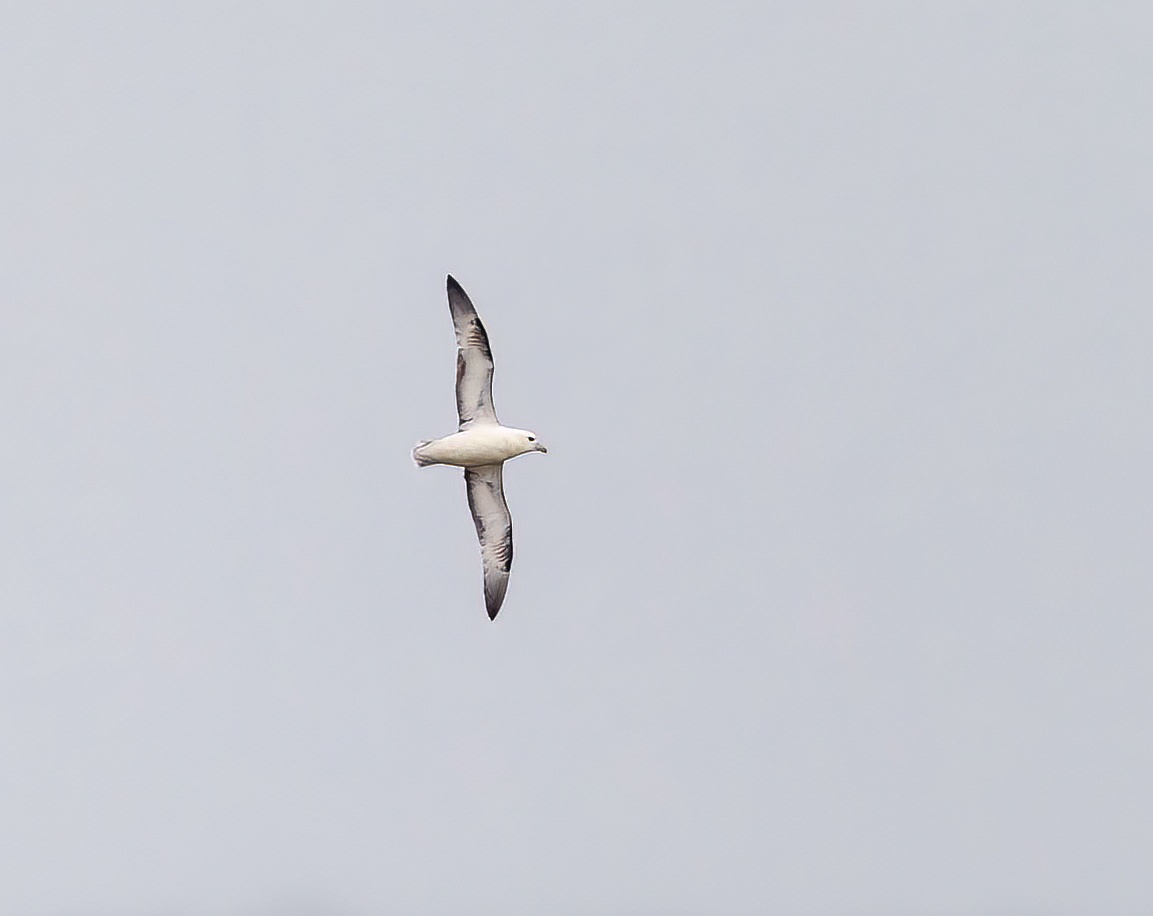Northern Fulmar Fulmar glacialis
Offshore visitor, declined from fairly common to scarce, mainly March-November. Rare in winter and very infrequent inland.

The Seabird Monitoring Programme reports that Northern Fulmar has declined by 38% from 2000-2018. In Lincolnshire the decline feels much worse. The Atlas reported a one-day count of 2,000 past Chapel Point in September 1989. The largest one-day count in the period 2003-18 was 200 at Gibraltar Point on February 29th, 2004. The mean peak one day count reported in LBR has fallen as follows: five years to 2008 - 115 birds; five years to 2013 - 50 birds; five years to 2018 - 20 birds. In the latest five-year period, the peak count ranged from eight in October 2018 to a high of 63 at Gibraltar Point on February 8th, 2016. The decline has been attributed to several different causes. These include the reduction in the North Sea white-fish population and resulting declines in offal discharge from fishing boats, and the impact of climate change on sand eel populations, an important natural food source. Also, mortality as bycatch in the longline and gill net fisheries in Norwegian waters may be a factor. It should be emphasised that birds are still seen regularly, for example records were received on 45 dates between January-October 2018 but in much smaller numbers than hitherto. The absence of birds in November-December is attributed to Northern Fulmars wintering in distant waters. There are a number of ringing recoveries of Fulmars found dead on the coast, none of them recent. Birds originated from Orkney, Shetland and one from St. Kilda. One of the Orkney birds was more than 33 years old.
(Account as per new Birds of Lincolnshire (2021), included September 2022)
